Cebu City
A walk through Cebu City’s Carbon Market is an assault on the senses – four city blocks of street stalls filled with everything from samurai swords to sandals, machetes, bottles of palm wine (tuba), Adidas bags and backpacks, sea salt, avocadoes, ginger, limes, tomatoes, chocos, coconuts, papaya, shredded copra, floral dresses, T-shirts, pork, buffalo, fish and chickens with long use-by dates (their heads still on).
The sweetest mangoes, they say, come from Panglao Island, and you’ll find them here.
Overhead, a net of power lines crazily criss-cross from buildings to poles, sometimes so tangled and clumped they look like black spaghetti.
Hidden away in the narrow backstreets of the suburb of Basak is the eccentric work of Professor Julian Jumalon, a fine arts graduate who died at the age of 90 after a lifetime spent collecting butterflies, painting and creating what are known as lepido mosaics.
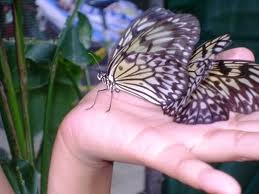 The ramshackle Jumalon Museum, Butterfly Sanctuary and Art Gallery is today run by his sons, Osman and Renae, but the lepidopterist’s humble garden is still a haven for butterflies in season and the simple gallery features intricately detailed artworks made from thousands of small slivers of damaged butterfly wings discarded by collectors, painstakingly pieced together with glue, tweezers and scalpel in a patchwork of vivid, tropical colours, from electric blue to flashing emerald and opalescent greens and mellow gold.
The ramshackle Jumalon Museum, Butterfly Sanctuary and Art Gallery is today run by his sons, Osman and Renae, but the lepidopterist’s humble garden is still a haven for butterflies in season and the simple gallery features intricately detailed artworks made from thousands of small slivers of damaged butterfly wings discarded by collectors, painstakingly pieced together with glue, tweezers and scalpel in a patchwork of vivid, tropical colours, from electric blue to flashing emerald and opalescent greens and mellow gold.
More than 900 butterfly species have been discovered in the Philippines, ranging in size from tiny yellow-winged flickers of colour in the jungle to the giant 8cm wingspan of Triodes Magellanus, the biggest butterfly found in the archipelago. In his lifetime, Jumalon discovered 20 new species and his lepido mosaics of past Filipino presidents, tribal art and tropical birds hang in galleries from Manila to Hong Kong and the Vatican in Rome.
Bohol Island
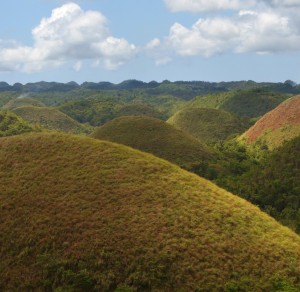 Leaving the hectic pace of Cebu City for the more rural attractions of nearby Bohol Island is a welcome transition.
Leaving the hectic pace of Cebu City for the more rural attractions of nearby Bohol Island is a welcome transition.
Despite its population of more than a million people, Tagbilaran, the island’s main city, is a country town compared to Cebu.
Bohol, surrounded by 73 smaller islands, is the food basket of the region, a primarily agricultural province where local people supplement their income with the production of handicrafts. In the hinterland the thatched huts are more sparse, scattered about with pigs, goats, chickens and children, amid a patchwork of crops including rice, corn, coconuts and yams.
Purok meeting huts on the roadsides are a focal point for villages, a place where local leaders debate social grievances before taking them up with barangay (regional council) officials.
Panglao Island
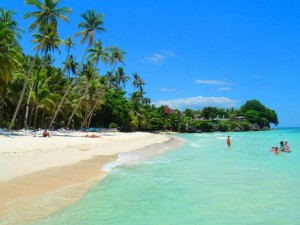 There are dozens of tourist resorts on adjacent Panglao Island offering widely priced accommodation, a focus designed to control and centralise tourism and associated foreign investment.
There are dozens of tourist resorts on adjacent Panglao Island offering widely priced accommodation, a focus designed to control and centralise tourism and associated foreign investment.
In clear tropical waters only 30m from Panglao’s shore, snorkellers can swim amongst coral gardens, some of thousands dotted throughout the archipelago, where clown fish cruise amongst giant orbs of brain coral varying in colour from indigo to pale yellow and purple, and soft coral sways and pulsates in the undulating current.
Bright yellow fan coral, folded like flutes of a pipe organ, reaches toward the sunlight and schools of thousands of tiny opalescent fish move symbiotically between the coral heads, parting and reforming with a single, mindful purpose.
Pamilacan Island
Those looking for bigger fish will find them at nearby Pamilacan Island, named from the word “pilak” or large hook, once used by local fishermen to hunt whale sharks and rays.
Today the waters around the island are noted for whale and dolphin watching and offer the chance to observe the mating rituals of giant, majestic manta rays.
Check out the other articles in this series:
The Philippines, Part 1 – A Tropical Mosaic
The Philippines, Part 3 – In The Footsteps Of Jesuits
Image Credits
Jeepney In Carbon Market – Wikimedia Public Domain
Bohol Chocolate Hills – Wikipedia Public Domain
Alona Beach in Panglao Island – Wikipedia Creative Commons
Manta Ray – Wikimedia Creative Commons
Butterfly © The Jumalon Museum

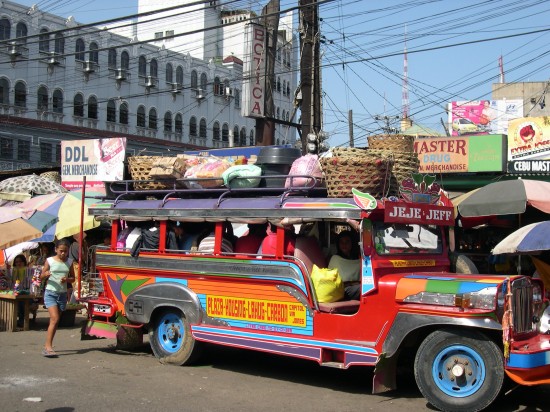
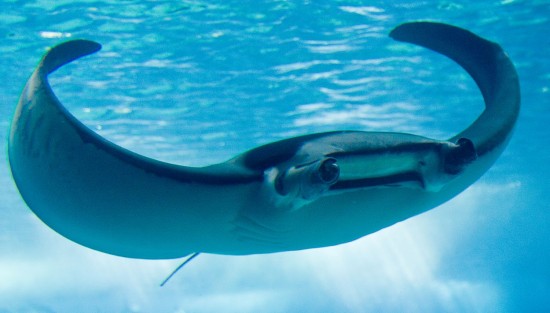

[…] The Philippines, Part 2 – Bohol and Beyond […]